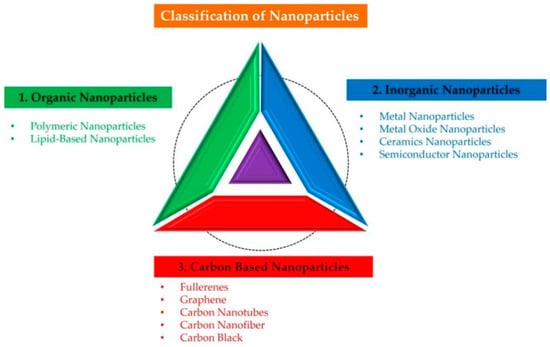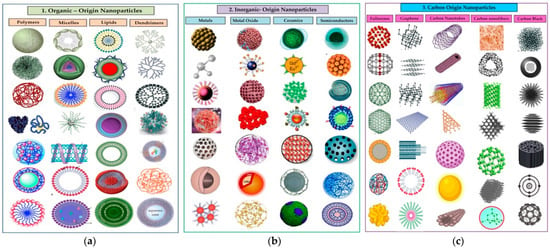Currently, titanium oxide (TiO2) nanoparticles are successfully employed in human food, drugs, cosmetics, advanced medicine, and dentistry because of their non-cytotoxic, non-allergic, and bio-compatible nature when used in direct close contact with the human body. These NPs are the most versatile oxides as a result of their acceptable chemical stability, lower cost, strong oxidation properties, high refractive index, and enhanced aesthetics. These NPs are fabricated by conventional (physical and chemical) methods and the latest biological methods (biological, green, and biological derivatives), with their advantages and disadvantages in this epoch. The significance of TiO2 NPs as a medical material includes drug delivery release, cancer therapy, orthopedic implants, biosensors, instruments, and devices, whereas their significance as a dental biomaterial involves dentifrices, oral antibacterial disinfectants, whitening agents, and adhesives. In addition, TiO2 NPs play an important role in orthodontics (wires and brackets), endodontics (sealers and obturating materials), maxillofacial surgeries (implants and bone plates), prosthodontics (veneers, crowns, bridges, and acrylic resin dentures), and restorative dentistry (GIC and composites).
1. Introduction
The advent of nanotechnology has led to a substantial surge in the applications of NPs for biomaterials, antibacterial substances, drug delivery systems, electronic equipment, sunscreens, and cosmetics [
1,
2]. Nanomaterials have previously been defined as natural, manufactured, or incidental materials that include particles as agglomerates or aggregates or in an unconfined form where 50% or a higher number of the particles depict one or more outer dimensions within the range of 1–100 nm [
3]. Moreover, to consider a material as a nanoparticle one of its three dimensions should be in a range of 1–100 nm [
4,
5]. Unique chemical and physical properties are demonstrated by oxide NPs due to their limited size and their corner surface sites possessing higher density [
6]. The physicochemical properties of fine particles (FPs) vary as compared to the NPs (NPs) that have a similar composition.
The TiO
2 fine particles (FPs) are poorly soluble and have a low toxicity [
7,
8]. The TiO
2 NPs (NPs) have an enhanced catalytic activity as compared to the fine particles (FPs), which consequently leads to their higher utilization in consumer and industrial products. The properties of the TiO
2 NPs may pose a challenge to human health and are responsible for the distinctive bioactivity of these NPs [
9,
10]. The TiO
2 NPs are prominent and versatile oxides that have a higher production due to their acceptable chemical stability, lower cost, strong oxidation properties, high refractive index, and formidable oxidation properties [
11]. The TiO
2 NPs have found their optical industrial applications as semiconductors due to having the critical property of the wide band gap [
12,
13]. They have also been used in electronic devices and as sensors due to their particular ionic and electrical properties [
14]. As these NPs exist as a water insoluble powder and are white in color, they can be utilized in the paint industries as pigments [
15]. Three polymorphic forms of the TiO
2 NPs exist naturally; they are the rutile, brookite, and anatase forms with crystalline structures, and the gemstone industries have utilized them extensively [
14]. The TiO
2 NPs have been employed for decomposing water waste pollutants as photocatalysts, as food additives, and as antibacterial and antimicrobial agents [
16,
17,
18,
19]. The TiO
2 NPs can help in destroying fungi, viruses, bacteria, and cancer cells [
20]. The TiO
2 NPs have been used in sonodynamic and photodynamic therapy (PDT) for the treatment of cancer [
21]. The NPs have the ability to convert photon energy into heat through photo thermal therapy, via their super hydrophilicity, in vivo chemical and thermal stability, low toxicity, optical absorption, and thermal conductivity [
22]. The nanostructure of TiO
2 has been used for drug delivery systems in various anticancer drugs, such as temozolomide, cisplatin, doxorubicin, and daunorubicin [
23,
24,
25]. Previously, polyethylene glycol-coated NPs have been used for the treatment of melanoma through photothermal therapy [
26]. The (TiO
2) NPs have been used in dental applications due to their ability to enhance the mechanical properties of biomaterials without altering their biocompatibility [
27,
28,
29]. Previous studies have utilized the TiO
2 NPs in order to improve the bond strength and antimicrobial properties of composites [
30]. The TiO
2 NPs have also been used to improve the working time, setting time, push-out bond strength, and compressive strength of cements [
31]. The mechanical properties of the resins have also been optimized by incorporating titania NPs into them [
32,
33]. Moreover, silver-doped titania NPs have also been incorporated into dental polymers in order to produce potent bactericidal effects [
34].
2. Background of Nanotechnology
Nanotechnology has been considered as a significant discipline of the latest research involving the synthesis protocols and the designing and manipulating techniques of the particle’s structure in different dimensions in the range of about 1–100 nm. Moreover, this emerging nanotechnology has specifically opened vast doors for the synthesis of nano-scaled materials and the exploration of their unique electronic, optical, physicochemical, strength, magnetic, electrical, and mechanical characteristics, together with the utilization of this rapidly growing novel technology in certain various fundamental frontiers. These fundamental areas that involve nanotechnology are electronics, multimedia, cosmetics, medicine, engineering, electronics, industries, food, environment, robotics, optics, machines, catalysts, drug delivery systems, genomics, biomedicines, material sciences, energy sciences, light emitters, solar energy processes, imaging technology, physics, chemistry, electromagnetic devices, electron transistors, energy-producing plants, water treatment plants, solar energy conversion, etc. [
35,
36]. Currently, nanotechnology has gained a popular status in multiple health systems, such as control, prevention, diagnosis, monitoring, and treatment; this has happened quite rapidly because of its unique and high-quality properties [
37,
38]. The word “nano” is taken from the Greek word nanos, meaning “dwarf”, which factually refers to 1 billionth of physical size. Furthermore, it can be inferred that the area of nanotechnology works at the level of atoms and molecules ranging between 1 and 100 nm in size [
39].
2.1. History of Nanotechnology
NPs were used by artisans as far back as the 9th century in Mesopotamia for generating a glittering effect on the surface of pots. Pottery from the Middle Ages and the Renaissance often retains a distinct gold or copper-colored metallic luster [
40]. The luster originated within the film itself, which contained silver and copper NPs dispersed homogeneously in the glassy matrix of the ceramic glaze [
41]. The concepts that seeded nanotechnology were first discussed in 1959 by renowned physicist Richard Feynman in his talk “There’s Plenty of Room at the Bottom”, in which he described the possibility of synthesis via the direct manipulation of atoms. The term “nanotechnology” was first used by Norio Taniguchi in 1974, though it was not widely known at that time [
38,
40].
2.2. Significant Features of Nanotechnology
There are three major features that play a vital role in defining the versatility and superiority of nanotechnology in comparison to normal technology [
42]:
-
This technology can bring changes in the original matter’s structure by converting it into a nanoscale product.
-
The newly formed nanoscale structure should contain periodic repetition (i.e., the nanoparticle must periodically repeat itself in one or more than one direction) just like the parent matter.
-
The novel properties, characteristics, and functions of a newly formed nanoscale product should be like those of the parent matter or be superior to the parent matter despite being nanometric.
2.3. Classification of NPs
NPs are categorized generally as organic, inorganic, and carbon-based in origin, as illustrated in (
Figure 1). The carbon-based NPs are entirely made of carbon. The organic NPs are found to be non-toxic, biodegradable, and ideal for drug delivery. The NPs that do not consume carbon during their synthesis are called inorganic NPs and include metal and metal oxide-based NPs. The metal oxide-based NPs have extraordinary properties, such as their sizes (ranging between 10 and 100 nm); shapes (spherical, cylindrical, etc.); surface characteristics (pore size, high surface-area-to-volume ratio, surface charge dentistry, and surface charge); structures (crystalline and amorphous); color; and sensitivity to various environmental factors (heat, air sunlight, moisture, etc.) (
Figure 2) [
43,
44].
Figure 1. Classification of NPs: (1) organic-origin NPs, containing polymeric NPs and lipid-based NPs; (2) inorganic-origin NPs, containing metal NPs, metal oxide NPs, ceramic NPs, and semiconductor NPs; (3) carbon-origin NPs, containing fullerene NPs, graphene NPs, and carbon NPs (idea adapted from ref [
45].
Figure 2. Size and shape of different types of NPs: (
a) polymers, micelles, lipids, and dendrimers belonging to organic-origin NPs; (
b) metals, metals oxide, ceramics, semiconductors belonging to inorganic-origin NPs; (
c) fullerenes, copolymer, carbon nanotubes, carbon nanofibers, and carbon black belonging to carbon-origin NPs (idea adapted from the ref [
46]).
3. The Titanium Oxide NPs
These NPs are commonly named as TiO
2 or titania because they are oxides of metals [
47,
48,
49]. Titania is available in the form of fine, white powder and/or thin film [
22,
50]. Naturally, there are four crystal forms of titanium oxide: TiO
2 (B), brookite, anatase, and rutile [
51]. However, the mixture of anatase and the rutile crystal phase form of the TiO
2 NPs, which usually exists, is more inert and stable in comparison to the anatase crystal phase form, which displays more chemical reactivity. This chemical reactivity of the anatase crystal phase form could be beneficial in eliminating cancer cells efficiently [
52,
53].
The TiO
2 NPs are famous for their well-known attractive properties, including magnetic, optical, thermal, physicochemical, electrical, rheological, mechanical, and biological properties. These NPs are highly suitable for utilization in various fields under normal conditions because of their relatively low cost, insoluble nature, and high refractive index (
n = 2.4). They are absolutely extra white, which enhances their value in multiple different fields [
47,
48,
49]. Moreover, TiO
2 NPs are widely used in anti-flavor textiles, water disinfectants, food supplements, cosmetics, indoor sprays, anti-flavor textiles, household appliances, paper, plastics, food packaging materials, sunscreens, electronic products, medicines, fibers, bakery products, sensors, glazes, and coloring agents in foods due to their smaller size [
54,
55,
56].
This entry is adapted from the peer-reviewed paper 10.3390/nano12203670


